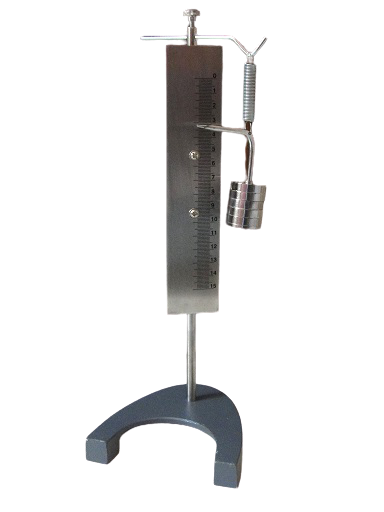Description
Hook’s Law Apparatus is a physics laboratory instrument used to study elasticity and the relationship between force and extension in a spring. The apparatus consists of a vertical support rod with a spring attached to it, and a horizontal ruler or scale to measure the extension of the spring. The apparatus also includes a set of weights that can be added or removed from the spring to apply different forces.
To use the Hook’s Law Apparatus, weights are added to the spring, causing it to extend. The extension of the spring is measured using the ruler or scale, and the corresponding force applied to the spring is calculated using the weight and gravitational acceleration. The experiment can be repeated with different weights to observe the relationship between force and extension and verify Hooke’s Law, which states that the extension of a spring is proportional to the force applied to it.
Hook’s Law Apparatus is widely used in physics education, from high school to university level, to conduct experiments on elasticity and Hooke’s Law. It provides a simple and effective way to demonstrate the fundamental principles of physics and helps students to understand the relationship between force and extension in a spring.







